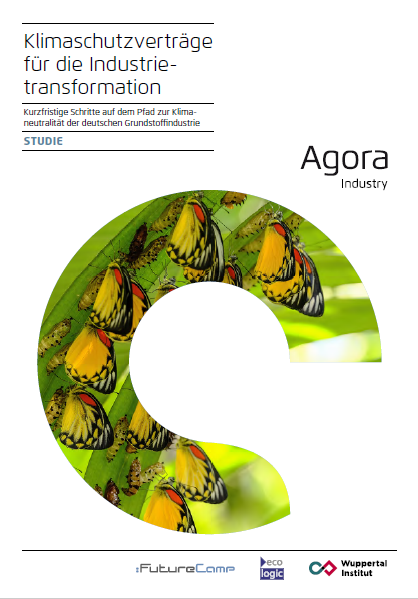In December 2020, European leaders agreed to tighten the 2030 climate target. Emissions are now to be at least 55% lower by 2030 than in 1990. By the middle of the century, the EU economy is to be climate neutral.
The necessary transformation also affects the energy-intensive primary industries. In order for them to continue to exist in a climate-neutral economy – with a then significantly higher CO2 price – drastic innovation steps and massive investments in transformative technologies as well as in the necessary infrastructure are required. Examples include hydrogen-based direct reduction in the steel industry or Oxifuel processes with subsequent CO2 capture in cement production.
In view of the reinvestment cycles in the industries concerned, these investments will be necessary in the coming years. On the other hand, however, these investments also represent an opportunity for European industry to build up knowledge and expertise in key future markets.
The guiding instrument for emissions from European industry is the EU emissions trading system. However, this faces a dilemma: Current prices are too low to create a sufficient incentive for innovation and investment in climate-neutral technologies. Nevertheless, the prices that would be necessary for this would threaten the competitiveness of the same industry.
Therefore, new instruments are needed to drive the transformation of industry and provide a stable framework for climate protection investments. One suitable mechanism could be carbon contracts for difference. Through this instrument, the government covers the additional costs of using carbon-neutral technologies compared to conventional production. By having the government absorb the additional costs, it becomes attractive for energy-intensive companies to invest in climate-neutral technologies already today, even though they are not yet market-ready and thus not competitive on the international market.
Together with FutureCamp, Ecologic Institute examines in detail the design options of such climate protection contracts. The focus is on the practical implementation of the instrument, such as the design in compliance with EU state aid law as well as overlap and demarcation with other (funding) instruments. On the basis of current research on the subject, but in particular on the basis of a close exchange with energy-intensive industry, the project team is developing concrete proposals for the design of climate protection contracts. For this purpose, the contractors are drafting a general input paper on climate protection contracts. In addition, input papers specifically tailored to the steel, cement and chemical sectors are being drawn up. The contents of these papers are discussed with the industry in an intensive dialog process in the form of webinars and workshops. Critical comments are incorporated into the final design of the input papers before they are made publicly available.





